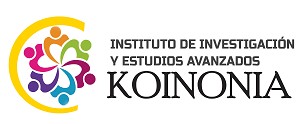Differentiated instruction on reading skills at higher Education Level
Resumen
The development of reading skills from early levels is the key tool to success not only in the academic context; but also for personal development. Reading at literal level is the starting point where students get the basic skills to develop comprehension reading skills at a higher level. The purpose of this study was identify the extent to which English teachers from elementary level groups of English as a Foreign Language (EFL) are aware of the effect of the implementation of Differentiated Instruction (DI) on the reading skills development. A total of 20 EFL teachers were surveyed in this investigation. Initially, teachers were asked to answer some questions about differentiated instruction, and later on, students of an experimental group were tested after the implementation of DI. The results showed a positive impact of DI on the development of reading skills, since there was a significant gain in the post test scores. There was also evidence of lack of awareness teachers have about the positive effect that DI has on the development of reading skills. The differentiated strategies met students’ needs, readiness level, learning styles and interests. Working under different modalities made students´ engagement easier through the implementation of differentiated reading modalities: peer reading, reading in groups, reading alone and reading for fluency. The teacher assisted the learners through the processes of content differentiation, process and product presentations. As a result, it was found advisable to apply a replica of this quasi-experiment to students of higher levels to see and confirm the great benefits of the implementation of Differentiated Instruction on the development of reading skills. Finally, based on the findings from questions were teachers were asked about DI, an e-book with differentiated strategies was developed to encourage and guide its implementation.
Descargas
Citas
2. Leon, M. (2013). “Factors that affect the English language teaching-learning process in Ecuadorean public high schools.” Tesis de Licenciado en Ciencias de la Educación .
3. National Commision on Excellence in Elementary Preparation for Reading Instruction. ( 2003). Prepared to Make a Difference. International Reading Association: differentiation-that-dont-involve-writing-different-materials-and-a-different- plan-for-each-student-in-the-class-2/
4. Samuelowiczs,K.,&Bain,J.D. (2001). Revisiting academics´beliefs about teachingand learning. Higher Education, 41,299-325.
5. Segalowitz, N., & Segalowitz, S. (1993). Skilled performance, practice, and the differentiation of speed-up from automatization effects: Evidence from second language word recognition. Applied Psycholinguistics, 14, 369–385.
6. Theisen, T. (2002). Differentiated Instruction in the Foreign Language Classroom.
7. Tomlinson, C. A. (2013). Differentiation and classroom assessment). Los Angeles: USA: In J. H. McMillan (Ed.).
8. Weselby, C. (2014, October 1). Retrieved from What is Differentiated Instruction?: http://education.cu-portland.edu/blog/teachingstrategies/examples-of- differentiated-instruction/
Derechos de autor 2020 Elsa de los Ángeles Hernández-Chérrez I, Nelly Patricia Galora-Moya II, Cynthia Soledad Hidalgo-Camacho III

Esta obra está bajo licencia internacional Creative Commons Reconocimiento-NoComercial-CompartirIgual 4.0.
CC BY-NC-SA : Esta licencia permite a los reutilizadores distribuir, remezclar, adaptar y construir sobre el material en cualquier medio o formato solo con fines no comerciales, y solo siempre y cuando se dé la atribución al creador. Si remezcla, adapta o construye sobre el material, debe licenciar el material modificado bajo términos idénticos.
OAI-PMH URL: https://cienciamatriarevista.org.ve/index.php/cm/oai














